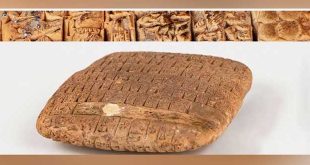Damascus, SANA – The Syrian archeological ivory artifacts reflect the dexterity of the Syrian sculptors and the prominent status of the Syrian deep-rooted plastic art on the international level since the dawn of history.
A 7,4 cm high statue representing a man in the position of prayer made of the hippopotamus tusk is one of the most important Syrian archeological ivory artifacts.
The man holds in his hand a young deer as an oblation.
Historian Mahmoud al-Sayyed of the General Directorate of Archeology and Museums said the head and the physiognomy of the statue were made with great precision. The shoulders appear wide and the thighs and legs are clenched in an aesthetic integration reflecting the high skills of the sculptor.
Al-Sayyed, who is a reader of ancient history and inscriptions, added that the statue was unearthed at Ebla kingdom, currently called Tall Mardikh, in the northern Idleb province, and it dates back to the 17th century B.C., indicating that the statue is displayed at Idleb National Museum.
In ancient times, the ivory was taken from the extinct mammoths that have huge tusks with milky color, yet the ivory taken from the tusks of the hippopotamus is the hardest among all types of ivory.
R. al-Jazaeri/H. Said
 Syrian Arab News Agency S A N A
Syrian Arab News Agency S A N A




